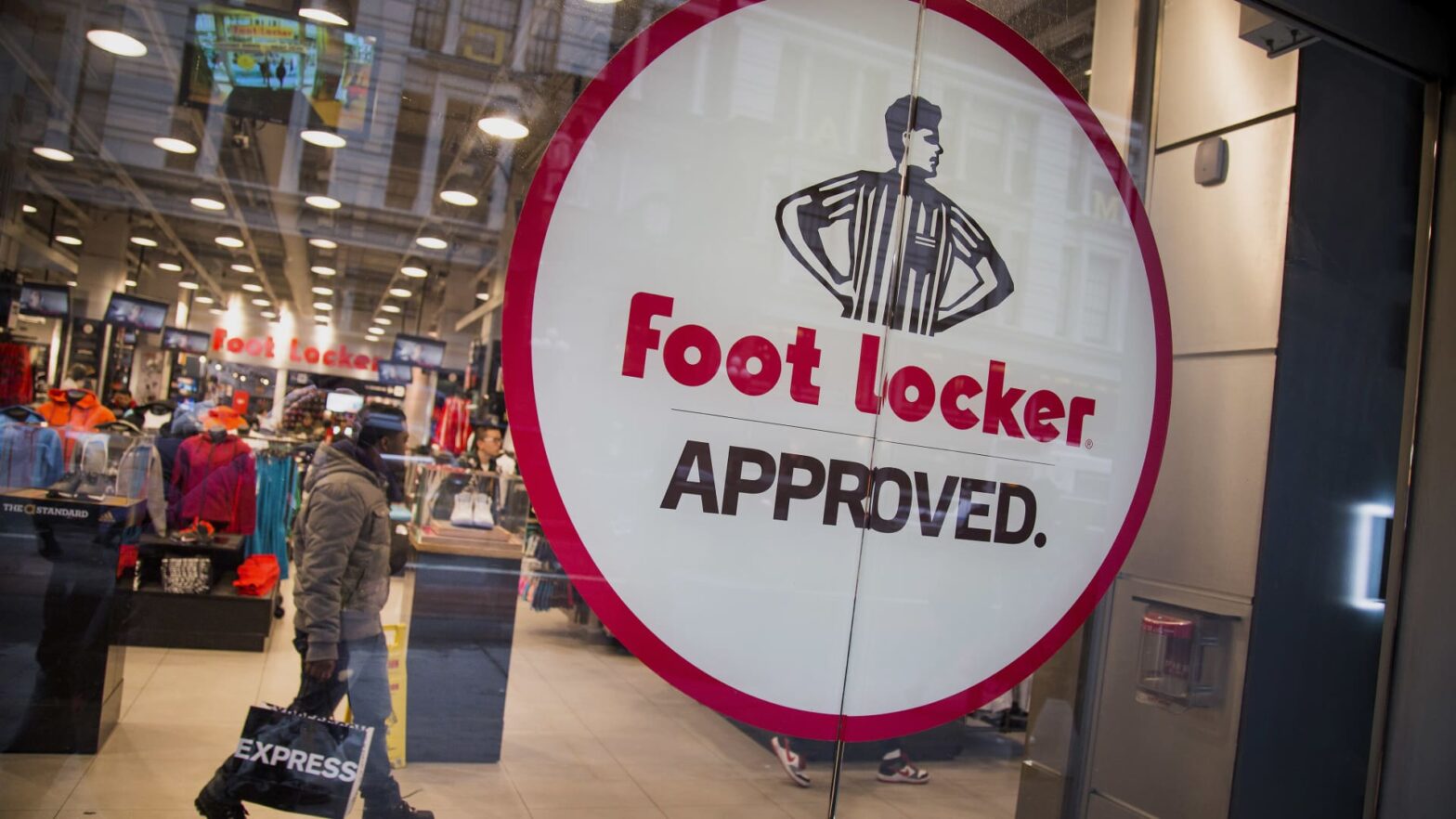U.S. stocks closed lower on Friday as investors focused on debt-ceiling talks in Washington D.C., which Republican Rep. Garret Graves of Louisiana, a deputy for House Speaker Kevin McCarthy, said were on pause. The Dow Jones Industrial Average
DJIA,
ended about 109 points lower Friday, or 0.3%, near 33,426, but booked a 0.4% weekly gain. So did the other major U.S. indexes. The S&P 500 index
SPX,
closed 0.2% lower, while booking a 1.6% weekly gain. The Nasdaq Composite Index
COMP,
shed 0.2% Friday, but gained 3% for the week to advance for a fourth week in a row, its longest weekly stretch of wins since February 3, according to Dow Jones Market Data. Focus on Friday also was on regional banks after CNN reported that Treasury Secretary Janet Yellen said more mergers in the sector might be needed.
How to Buy Stocks in 4 Steps for Beginners
American, JetBlue alliance in northeastern U.S. blocked by judge
Shares of American Airlines Group Inc. and JetBlue Airways Corp. dropped late Friday after a U.S. judge sided with the Justice Department in a lawsuit aimed at undoing the airlines’ joint venture in airports in the Boston and the New York City areas.
In separate statements, both JetBlue
JBLU,
and American Airlines
AAL,
said they are considering their next legal steps and reaffirmed their contention that their alliance is beneficial to consumers.
JetBlue said that the agreement “has been a huge win for customers,” allowing it to grow in “constrained” northeast airports and to offer more routes.
American said the court was wrong in blocking the Northeast Alliance, as the joint venture is called, and that there was “no evidence in the record of any consumer harm from the partnership, and there is no legal basis for inferring harm simply from the fact of collaboration.”
The Justice Department sued in September 2021, shortly after the partnership was formed, saying that the alliance would eliminate “important competition” in the Boston and New York City areas and also harm air travelers across the country “by significantly diminishing JetBlue’s incentive to compete with American elsewhere, further consolidating an already highly concentrated industry.”
The airlines have long argued that, on the contrary, their alliance brought more choice to consumers as they added several nonstop flights out of the area’s airports.
The Justice Department has not yet commented on the order as of late Friday.
Friday’s decision has bigger implications for JetBlue, which in March was hit with another lawsuit by the Justice Department, this time one aimed at blocking its merger with Spirit Airlines Inc.
SAVE,
JetBlue battled for Spirit with Frontier Group Holdings Inc.’s
ULCC,
Frontier Airlines and Wall Street is split on whether that merger will win approval.
Shares of JetBlue dropped 0.3% in the extended session Friday, after a loss of 1.8% in the regular trading day, while American shares were off less than 0.1% after a decline of 1.5% in the regular session.
3 Top EV Stocks to Buy to Electrify Your Long-Term Returns
As electric cars gain more mainstream attention, numerous EV stocks have emerged as winners over the past decade. Of course, Tesla (NASDAQ:TSLA) has led the way, providing life-changing returns for those who bet on the success of Elon Musk’s vision.
However, with the market maturing, there are plenty of other opportunities to consider. Competition is picking up, making this a hot space with more options than ever for investors to pick the “next Tesla.”
Indeed, not all EV stocks are created equal. There are plenty of companies that won’t likely make it through a choppy economic environment. Thus, with a potential recession looming, many investors are steering away from EV stocks. Because many are pre-revenue, such companies may not have the balance sheets to withstand significant volatility.
With that said, here are three EV stocks I’ve got on my radar right now. In my opinion, these are among the best options for long-term investors looking for growth and viability in the race for global EV market share.
Nio (NIO)
Due to recent price cuts in the electric vehicle industry, Nio’s (NYSE:NIO) shares have fallen 12% this year, making it one of many EV makers under economic scrutiny by investors.
Nio’s EV deliveries hit a record high in December, but its momentum hasn’t continued this year. Its Q1 deliveries rose YoY but fell sequentially by almost 23% due to a price war in China, which impacted sales across the industry as customers held off purchases expecting further cuts.
Nio’s transition is going smoothly, as it started delivering its new coupe SUV EC7 ahead of schedule and launched its 2023 ET7 sedan at Auto Shanghai in April, with deliveries expected to start this month. Pre-orders for its revamped 2023 ES6 SUV model are also available, with an official launch scheduled for this month.
In summary, Nio is set to launch its upgraded models this month, which should boost its orders and deliveries. CEO William Li expects Nio to double its sales this year compared to last year, which is positive news for the EV stock that has lost almost half its value in the past year. As Nio’s numbers improve, investor interest is likely to increase.
ChargePoint (CHPT)
ChargePoint (NYSE:CHPT) is a leading global provider of electric vehicle charging stations. The company has a strong presence in 14 countries, including the largest EV charging network in the United States. As the adoption of electric vehicles grows, ChargePoint is well-positioned to benefit from the increased demand for charging stations. The company projects revenue growth of over 60% in the coming years.
ChargePoint has a significant presence in both the U.S. and Europe, with “hundreds of thousands” of charging locations. The company is currently serving 80% of Fortune 50 companies, which will likely lead to a surge in revenue and profits as these companies continue to purchase more EVs.
JPMorgan analyst Bill Peterson expressed positivity about ChargePoint’s strategy and ability to become profitable after meeting with the company’s management, keeping an “outperform” rating on the shares, while analysts predict the company’s revenue to increase to $703.5 million this year and $1.1 billion in 2024, up from $468 million in 2022.
Despite current market concerns, CHPT’s strong track record suggests that it will likely achieve profitability within the next three years. As a key player in the development of widespread charging stations, it has the potential as a top breakout stock.
Albemarle (ALB)
Albemarle (NYSE:ALB) is a lithium company that has been through some tough times recently — but it is showing signs of a comeback. The company’s stock price has been on the rise and some investors believe that it could reach $290 by the end of the year.
Albemarle had a record year in 2022, thanks to strong growth in lithium prices. Sales grew by more than 140% year-over-year, and EBITDA grew by more than 250%. However, the company cut its full-year earnings outlook in the first quarter of 2023, citing falling lithium prices. Despite this, Albemarle remains a good long-term investment, as global lithium demand is expected to skyrocket by 2030.
Despite the EV price war, Albemarle is a top-rated stock to buy. The company is a major provider of lithium, a key component in electric vehicle batteries. As demand for EVs grows, Albemarle is well-positioned to benefit.
On the date of publication, Chris MacDonald did not have (either directly or indirectly) any positions in the securities mentioned in this article. The opinions expressed in this article are those of the writer, subject to the InvestorPlace.com Publishing Guidelines.
Prepare for Punishment With QS Stock

Source: rafapress / Shutterstock
Electric vehicle battery technology company QuantumScape (NYSE:QS) might seem like a promising startup in a potentially hyper-growth niche industry. However, financial traders should maintain low expectations for QS stock in 2023.
It’s a harsh reality to face, but QuantumScape’s financials aren’t ideal. Moreover, the company’s progress toward product commercialization is moving at a snail’s pace.
QuantumScape is chasing the Holy Grail of EV battery cell technology. For quite a while, QuantumScape’s shareholders have hoped that the company’s “forever battery” would be a game-changer in the vehicle electrification market.
As the old saying goes, however, hope isn’t a viable investment strategy. It feels like QuantumScape is taking forever to move its “forever battery” from concept to commercialization. In the meantime, QuantumScape’s loyal investors continue to deal with steep capital losses.
The Trend Isn’t Your Friend With QS Stock
In hindsight, it’s clear that QuantumScape was over-hyped in February of this year. Since then, QS stock has lost half of its value, and has slid toward the perilous $5 level. Below that, the stock could enter penny stock territory.
Clearly, QuantumScape’s innovative spirit hasn’t lifted traders’ spirits on Wall Street.
It’s been frustrating to continually check QuantumScape’s press releases page and see very few updates there. The clock keeps ticking. It’s been five months since the company shipped out its 24-layer prototype battery cells to automotive manufacturers.
For what it’s worth, QuantumScape released a shareholder letter on April 26. That letter did nothing to stop the downfall of QS stock, though. Even after all of this time has passed, QuantumScape still has “work to do to improve reliability” as the company transitions “from prototype to commercial product.”
They’ve provided no specific timeline on this transition, however.
QuantumScape’s Financials Are Getting Worse
QuantumScape seems to take its time in advancing its battery cell technology. This is problematic because the company’s capital position is diminishing. After all, it’s not cheap to operate an innovative business enterprise like QuantumScape.
QuantumScape has admitted that its planned “principal operations have not yet commenced” and that, as of March 31, the company “had not derived revenue from its principal business activities.”
The company has been spending money but not generating any sales. Notably, QuantumScape’s operating expenses grew from $90.657 million in 2022’s first quarter to $109.978 million in the first quarter of 2023.
During the same time frame, QuantumScape’s net earnings loss widened by nearly 16%, from $90.353 million to $104.631 million. Not only that, but the company’s capital position has been in a state of decline.
Alarmingly, QuantumScape’s cash, cash equivalents and restricted cash decreased from $300.535 million to $258.733 million.
QS Stock Isn’t Worth Your Time and Money
QuantumScape’s long-term investors have taken a lot of punishment. The company hasn’t given QuantumScape’s shareholders an operational road map with specific time frames.
Thus, QuantumScape is testing its stakeholders’ patience without delivering sufficient value to them. QS stock doesn’t deserve an “F” rating, as the company could alter the EV battery landscape at some point in the future.
However, the stock gets a “D” rating since many investors won’t want to wait an indefinite period of time for QuantumScape to finally achieve full commercialization.
On the date of publication, neither Louis Navellier nor the InvestorPlace Research Staff member primarily responsible for this article held (either directly or indirectly) any positions in the securities mentioned in this article.
Double Top (Reversal) Stock Chart Pattern & How to Trade it: Technical Analysis Ep 224
3 Energy Stocks That Have Game-Changing Technologies
More than any time since the advent of fossil fuels, new, game-changing energy technologies are emerging and proliferating, making many energy stocks very attractive. The latter phenomena are not really surprising, given the huge increases in the utilization of renewable energy, along with the electric-vehicle revolution.
Among the new technologies rising to the forefront are innovative types of energy storage, devices that enhance solar energy and wind energy projects, the use of artificial intelligence to enhance electricity usage and new technologies that enhance the electric grid.
Here are three energy stocks with game-changing technologies:
Array Technologies (ARRY)
Array (NASDAQ:ARRY) has developed DuraTrack, a “tracking system” for solar projects. According to Solar Power World, “Trackers direct solar panels or modules toward the sun.”
Trackers can reportedly increase the “energy production [of solar projects] by about 30%.” That’s a really meaningful increase, particularly for utilities that are deploying huge amounts of solar panels. Given the proliferation of EVs, electricity is likely to keep getting more expensive, particularly in parts of the world that do not strictly regulate electricity utilities. Consequently, Array’s DuraTrack is going to be able to save consumers and companies a great deal of money over the longer term.
Array says that DuraTrack features the “innovative use of fewer components combined with [a] failure-free wind design.”
Critically, solar project owners appear to very much like DuraTrack, as the company’s top line jumped to $376.77 million from $300.586 million during the same period a year earlier, while its income from operations came in at $47.458 million, versus a loss of $38.344 million during the same period a year earlier.
Stem Inc (STEM)
Stem (NYSE:STEM) offers multiple products, but its “bread-and-butter” technology is its artificial intelligence-driven software, Athena. Despite the low price of STEM stock, the company is a leader in using artificial intelligence (AI) technology which, of course, is quite “hot” right now and rightfully so.
Athena uses AI “to maximize energy asset performance and investments.” It does that by jointly managing “solar, storage, and EV charging” systems. Additionally, when Athena manages the latter systems, it takes into account ” data about weather, market prices, utility rates, and other factors.”
As electricity gets more expensive and many more companies utilize solar, storage and EV charging, Athena will become much more valuable and popular.
But utilization of the system is already growing quite rapidly, as Stem’s revenue soared 63% year-over-year last quarter.
Making the shares even more attractive, they’re changing hands for about 0.75 times analysts’ mean 2024 sales target for the company.
General Electric (GE)
GE (NYSE:GE) has some very impressive technology in the energy sector. According to the company, its Haliade X turbine is “the most powerful offshore wind turbine to date” and significantly lowers the cost of producing electricity for operators. Haliade is the first turbine to have a capacity of over 12 megawatts of electricity.
The company is also working on creating a larger “17-18 megawatt (MW) Haliade-X offshore wind turbine,” Elektrek reported in March. The publication noted that “Wind turbine manufacturers keep building larger turbines because the more power a turbine captures, the more the cost of electricity is reduced.”
Moreover, GE’s High Voltage Direct Current (HVDC) systems sound both extremely useful in today’s new-energy world and likely to move the needle for GE stock. These products “enable utilities to move more power further, efficiently integrate renewables, interconnect grids and improve network performance,” GE reports.
In March, two consortia led by GE signed huge deals worth a total of $10 billion “to build state of the art” HVDC systems in Europe.
As of the date of publication, Larry Ramer owned shares of GE and STEM. The opinions expressed in this article are those of the writer, subject to the InvestorPlace.com Publishing Guidelines.
Why SQ Stock May Plunge Again Before Bottoming Out
Over the past eighteen months, shares in Cash App and Square parent Block (NYSE:SQ) have fallen in price by around 75%. With this, many investors may believe that the worst is already priced-in with SQ stock.
But while Block’s valuation is a lot more reasonable today than it was in late 2021, don’t assume that it has become a bargain. As I have argued previously, it’s possible that the market is too confident in the fintech firm’s growth prospects.
This is because of growing odds of a severe economic downturn later this year. I’m not the only one holding this cautious view on SQ right now. Just recently, a sell-side analyst (more below) laid out a similar bearish argument.
A challenging economic environment could affect Block’s various businesses across-the-board. If this scenario plays out, shares could sustain further declines before (possibly) embarking on a recovery.
SQ Stock and the Latest Analyst Downgrade
Earlier this month, Square released its latest quarterly results. As you may recall, right after the earnings release, I argued that there was more cause for concern than cause for celebration with these latest numbers.
To some extent, the sell-side community’s positive sentiment for SQ stock has been damped since the May 4 earnings release. Several analysts have made downward revisions to their respective price targets in recent weeks. Still, one analyst has made the leap, from being bullish on Block, to becoming bearish on it.
That would be CLSA’s John Marrin. On May 11, he downgraded SQ from “buy” to “underperform.” While coming on the heels of recent earnings, Marrin’s argument for the downgrade focused less on the latest results, and more on what could play out in the coming quarters.
As hinted above, Marrin believes that the chances of a “hard landing” for the U.S. economy during the latter half of 2023 keeps rising, as high inflation and interest rates squeeze consumers and small businesses.
Alongside downgrading Block stock, Marrin has also lowered his price target from $93 to $63 per share. However, I believe that even this target (modestly above current prices) may be too optimistic.
How a ‘Hard Landing’ Could Really Chop Block
The argument that this company could struggle during a tough recession is not a new revelation. Since late 2021, SQ stock investors have been bracing for the impact of a recession. Not only that, some segments of Block could prove to be more resilient than the aforementioned bearish analyst commentary suggests.
Namely, Cash App. Last year, some commentators argued this segment could keep thriving because it was connected more to essential purchases than on discretionary ones. Thus far, this appears to be playing out. Cash App continues to experience above-average levels of revenue and gross profit growth, despite the in-progress economic slowdown.
Even so, this gross profit growth has yet to translate into a swing from net losses to net profits for the overall company. That’s not all.
Cash App’s growth may also fail to counter the potential hit an economic “hard landing” could create for Block’s two other major segments, Square and Afterpay. Square of course could experience decreased merchant transaction volumes if the economy contracts.
Earlier this month, I pointed out that Afterpay, a “buy now, pay later” service, could end up reporting far greater loss rates, if economic conditions become more challenging.
Bottom Line: Stay Away as the Bear Case Strengthens
If Block’s revenue growth screeches to a halt, and net losses make a big leap higher, forget about SQ merely treading water at or near present price levels (high-$50s per share).
A worsening of the overall economic backdrop may just well be enough to push the stock back to multi-year lows (around $40 per share) before the stock truly bottoms out.
Even if a “hard landing” is averted, Block could remain under pressure. A “soft landing” could still lead to worse numbers than the figures the company has recently reported.
Potential increased regulatory scrutiny following short-seller allegations last March, is something else that may keep weighing on shares.
With shares now perhaps at greater risk of experience yet another plunge, consider it best to keep skipping out on SQ stock.
SQ stock earns a D rating in Portfolio Grader.
On the date of publication, neither Louis Navellier nor the InvestorPlace Research Staff member primarily responsible for this article held (either directly or indirectly) any positions in the securities mentioned in this article.
5 errores que cometemos al invertir en ETFs
FL, DKS, CTLT, OXY & more
Foot Locker Inc. signage is displayed in the window of a store in New York, U.S.
Michael Nagle | Bloomberg | Getty Images
Check out the companies making headlines in midday trading Friday.
Bloom Energy — The clean energy stock jumped 5.1% following an upgrade to overweight from neutral by JPMorgan. The bank said there’s a buying opportunity after a recent selloff.
Foot Locker — The footwear retailer tanked 25.7% after it missed both top and bottom lines during the fiscal first-quarter. The company also reduced its full-year outlook, citing a “tough macroeconomic backdrop.” Dick’s Sporting Goods followed Foot Locker lower, losing 6.5%.
Occidental Petroleum — Shares of the Houston-based oil and gas producer rose nearly 2%. Warren Buffett’s Berkshire Hathaway bought more shares on each of the last six trading days, boosting its stake to 24.4%. Buffett has ruled out the possibility to take full control of Occidental.
Disney — The media conglomerate fell nearly 2% in midday trading after Macquarie Research downgraded shares to neutral from outperform. “We still appreciate Disney’s ability to successfully transform to
a DTC-first streaming business over time, but now see more interim uncertainties,” Macquarie wrote.
Catalent — The drug maker surged 14.4% midday after the company shared a business update. CEO Alessandro Maselli said during a call that the company thinks it “can sufficiently service [customers’] demand.” The company has been dealing with problems at various production sites this year.
Farfetch — The e-commerce company added 17.6% in midday trading after Farfetch reported a revenue beat for the first quarter. Farfetch reported $556 million against analyst a Refinitiv forecast of $513 million.
Western Alliance, PacWest — shares of the regional banks dipped more than 4% each, giving back some of their sharp gains from this week. Despite the losses, Western Alliance and PacWest are still up more than 20%.
— CNBC’s Hakyung Kim, Alex Harring, Yun Li and Sarah Min contributed reporting










